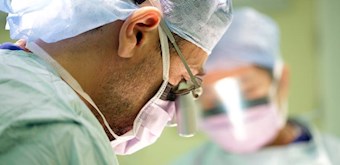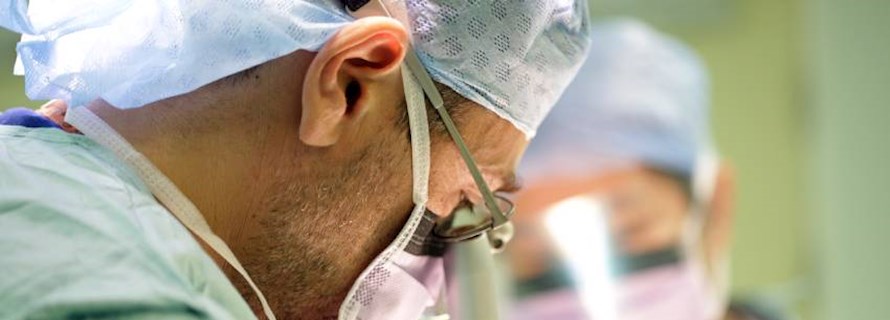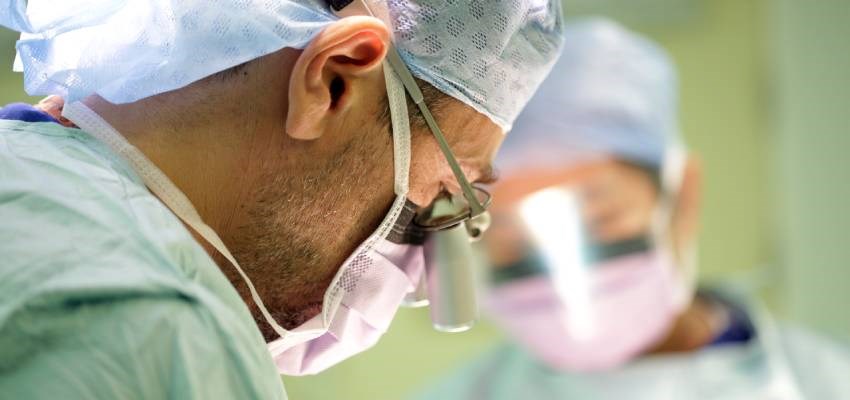Repair of brachial plexus injury
Brachial plexus surgical repair
Carrying out advanced surgical treatment for brachial plexus injuries
About brachial plexus injury
The brachial plexus is a group of five nerves stemming from the spinal cord in the neck. It connects the brain and spinal cord to nerves in the shoulder and arms, allowing movement and sensation. You have one brachial plexus serving each side of the body.
Brachial plexus injuries happen when the arm is forcefully pulled or stretched in the opposite direction to the limb. Falls, motorbike and car accidents and wounds caused by weapons can cause these injuries.
A brachial plexus injury in adults may involve each individual root and can result in:
- avulsion — the root is torn from the spinal cord
- rupture — a tear at root level
- tear — the nerve is ruptured inside
Need to know
-
What happens during brachial plexus surgery? icon plus
Treatment depends on the type of injury and how recently it happened — nerve attachment is more likely to succeed hours after the injury. The procedure happens under general anasethetic. A cut is made above the collarbone, to access the nerves.
Depending on the type of injury, your surgeon will perform one of the following procedures:
- Nerve repair. The two edges of a severed nerve are reattached. This kind of surgery is performed immediately, usually after a trauma.
- Nerve graft. A healthy nerve from another part of the body is used to hold a lacerated nerve together. The nerve fibres should grow and reconnect to the muscle.
-
How to prepare for surgery icon plus
Your consultant will explain the procedure and answer any questions you might have. Because general anaesthetic is used during the procedure, you may need to fast for several hours before the operation.
Your consultant will tell you how long you should avoid eating and drinking. Like all procedures, there may be some risks and side effects involved. Your consultant will explain these to you. -
After nerve surgery icon plus
Nerve regrowth takes time, so you may not feel results for a few months after surgery. Physiotherapy will play a key role in your recovery. As you recover, a physio will help you exercise your shoulder, elbow, wrist and fingers to prevent stiffness and to strengthen the muscles. It's important to follow these exercises so that you make steady progress. The physio will also show you the best way to carry out activities such as eating and bathing with a less functional arm. You may also need to wear a splint to help support your arm and take painkilling medicine.
Mr Marco Sinisi - Peripheral Nerve Specialist
At HCA Healthcare UK, we work with leading consultants to enable access to the the latest techniques and treatment.
Mr Marco Sinisi is our lead consultant for Peripheral Nerve Injuries based at The Wellington Hospital. Mr Sinisi has a comprehensive knowledge of nerve injuries and has experience in a wide range of nerve problems from trauma through to sports injuries. He is experienced in managing complex nerve conditions as well as performing complex nerve operations.




Our locations
From complex peripheral nerve surgery to diagnostic tests and procedures, we provide exceptional nerve injury care across our network of hospitals, outpatient centres and specialist clinics.
-
Peripheral Nerve Injury (PNI) Unit
The PNI Unit at The Wellington Hospital
Wellington Place
London NW8 9LE
-
The Wellington Hospital Elstree Waterfront
The Waterfront Business Park
Beaufort House, Elstree Road
Elstree WD6 3BS
Book a peripheral nerve appointment
We're happy to help you make an appointment with Mr Marco Sinisi. We can also make imaging and outpatient physiotherapy appointments for you.
Call us today
020 7079 4344